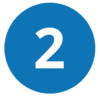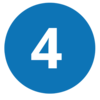Pandemic Market Volatility Assistance Program - $350 million
When schools, hotels, and restaurants closed due to the pandemic, the demand for milk, cheese, and other dairy products decreased. The CARES Act made $350 million available to start the Pandemic Market Volatility Assistance Program, which reimbursed dairy farmers impacted by lower demand for their products.
Nearly $238 million has been distributed to 126 recipients. The Dairy Farmers of America, Incorporated received the most money from the program, getting eight awards for $82.5 million.
Community-Based Child Abuse Prevention Grants - $250 million
Reports of child abuse increased significantly during the pandemic. The Community-Based Child Abuse Prevention Grants program supports the development and operation of programs that strengthen families, and aims to reduce the likelihood of child abuse and neglect.
The American Rescue Plan Act (ARPA) gave $250 million to this program, originally created in 1996 and managed by U.S. Department of Health & Human Services’ (HHS) Administration for Children & Families. Only 14% of the money has been spent so far. Funding is available until September 30, 2023.
Elder Abuse Prevention Intervention Program - $185 million
This is another program created before the pandemic that received additional funding from both CARES and ARPA legislation. The $185 million is to be used to protect older adults from pandemic relief scams. Throughout the pandemic, fraudsters have been tricking older adults into giving out their personal information to get a vaccine or other benefits. Once they get the information, fraudsters use it to steal their victim's identity or steal benefits for themselves.
The funding went to state agencies, like the Illinois Department of Aging. In total, there are 73 recipients and collectively they’ve spent $26.2 million, or 14% of the total funds.
Small Rural Hospital Improvement Grant - $148 million
The HHS Office of Inspector General found that the pandemic disproportionately affected day-to-day operations for rural hospitals because of limited staff and bed capacity. Although hospitals tried to use telehealth, they found that their patients didn’t have the technology they needed to participate — like a mobile phone or reliable internet connection.
The Small Rural Hospital Improvement Grant is a pre-pandemic program managed by the Health Resources & Services Administration (HRSA), an agency within HHS. The program gives rural hospitals with fewer than 49 beds funds to improve data collection, increase training, and buy better software. The passage of the CARES Act enabled these hospitals to use their HRSA funds to also pay for diagnosis and treatment of COVID-19. The agency has made $148 million available to recipients, and 97% of it has been spent.
The Poison Center Support & Enhancement Grant Program - approx. $5 million
This program, which also existed before the pandemic, got nearly $5 million from the CARES Act to help poison control centers respond to increased calls. During the first few months of the pandemic, the Centers for Disease Control and Prevention reported a 20% increase in calls related to exposure to cleaning products and disinfectants.
HRSA manages this grant program as well. The money must be spent by September 30, 2022, and 96% has been spent so far. The largest award went to the University of California San Francisco’s academic medical center, which received $572,000.
You can track the money just like us. Use our interactive dashboards to search through all the pandemic relief programs (also called assistance listings).






